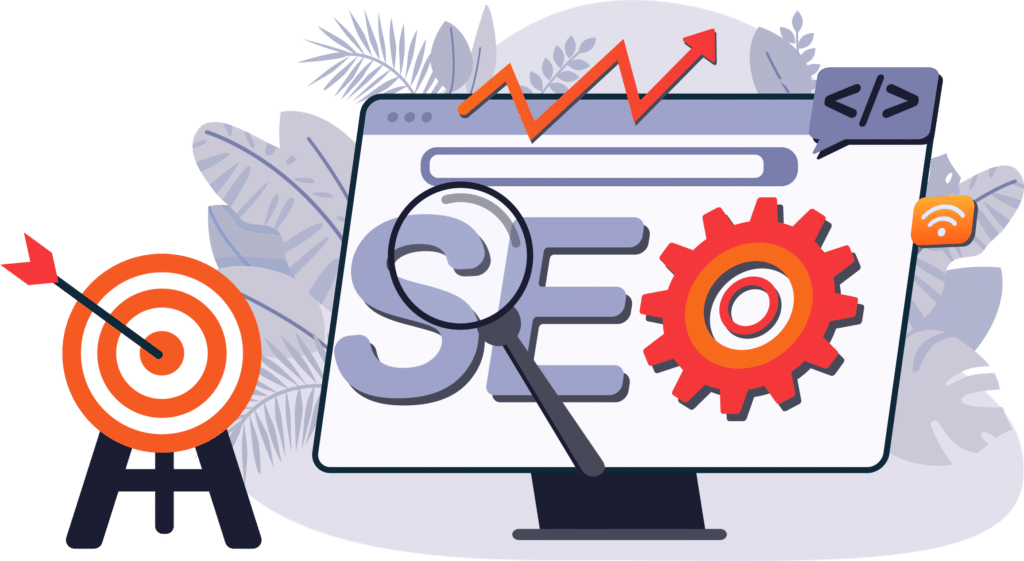SEO (Search Engine Optimization) isn’t just a buzzword thrown around in marketing meetings. It’s the backbone of online visibility. Think of it as the neon sign that guides customers to your digital doorstep. With the rise of sophisticated enterprise-level site search solutions, businesses now have a sharper tool in their arsenal to understand and cater to their audience’s needs.
But, as with all tools, it’s not just about possession but mastery. As we venture through 2023, the rules of e-commerce SEO are evolving, and staying ahead requires a mix of foundational knowledge and a keen eye on the horizon.

SEO best practices for e-commerce in 2023
Navigating the e-commerce world without a clear SEO strategy is like setting sail without a map. You might catch a favorable wind now and then, but you’re more likely to drift aimlessly. To chart a course for success, consider these e-commerce SEO best practices:
Keyword Optimization: Think of keywords as the lighthouses guiding customers to your shores. Embed them thoughtfully in titles, meta descriptions, and URLs. But remember, it’s not about stuffing; it’s about relevance and intent.
Site Structure: A well-organized site isn’t just aesthetically pleasing; it’s a beacon for search engines. Clear navigation and logical categorization can make the difference between a fleeting visit and a lasting engagement.
Mobile Optimization: In 2023, mobile isn’t just an option; it’s the norm. Ensure your e-commerce platform offers a seamless experience across devices. After all, a frustrated mobile user is a lost customer.
E-commerce SEO Tools: Equip your arsenal with the best. From analyzing user behavior to tracking conversions, the right tools can offer insights that drive impactful strategies.
Google Business Listing: Local searches are on the rise. Optimize your Google Business Listing to ensure that when someone’s looking for what you offer, you’re right there on the map.
Content Creation: Beyond products, offer value. Regularly updated blogs and informational content not only establish authority but also foster trust and engagement.
Product Schema: Enhance your product’s spotlight on search engine results pages (SERPs) with structured data. It’s like giving search engines a detailed brochure of what you offer.
Image Optimization: A picture speaks a thousand words, but only if it’s optimized. High-quality images with relevant alt tags not only enhance user experience but also boost SEO rankings.
Social Media Integration: In the age of sharing, make your products the talk of the town. Integrate with platforms like Pinterest and leverage the power of social signals.
Backlink Building: Think of backlinks as endorsements. Acquire them from reputable sources, and watch your site’s credibility soar.
Pillar Pages: Comprehensive guides linked to related subtopics not only offer value but also help search engines understand the depth and breadth of your content.
Common e-commerce SEO mistakes to avoid
Pursuing online success is not just about doing the right things but also avoiding the wrong ones. Here’s a look at some common e-commerce SEO mistakes that can derail even the most well-intentioned strategies:
Duplicate Content: Repetitive content across product pages can confuse search engines and dilute your site’s relevance. Ensure that each product description is unique and tailored to the specific item.
Ignoring Analytics: Data is your compass. Neglecting to track and analyze performance can leave you blind to what’s working and what’s not. Regularly review your analytics to make informed decisions.
Neglecting User Experience: Slow load times, cluttered design, and unclear calls to action can turn potential customers away. Focus on creating a user-friendly experience that encourages engagement and conversion.
Not Using Site Search Data: Site search can offer invaluable insights into user behavior. Leveraging this data can lead not just to better visibility but also to better product placements, improved content, and a more intuitive user journey.
For more on Site Search data, check out our blog post on Simplifying Site Search Data.
By sidestepping these common mistakes and maintaining a proactive approach to your e-commerce SEO strategy, businesses can ensure they’re not just keeping pace but leading the pack in their respective markets.
E-commerce SEO Trends for 2023
The rules of e-commerce SEO are constantly evolving. Businesses that anticipate and adapt to these shifts are the ones that will thrive, identifying new tools and opportunities, transforming challenges into possibilities, and setting new benchmarks for success. Here’s a glimpse into some of the trends shaping the e-commerce SEO world this year:
AI in E-commerce: Integrating Artificial Intelligence in e-commerce is no longer a novelty and is fast becoming a norm. AI tools are enhancing product descriptions, personalizing user experiences, and offering predictive analytics that help businesses forecast trends and adjust strategies accordingly.
Local SEO: As consumers increasingly seek local businesses and products, optimizing your e-commerce SEO for local search has become paramount. It involves ensuring accurate business listings, garnering positive reviews, and optimizing for location-specific keywords to capture the attention of nearby potential customers.
Voice Search: Voice Search has become an essential part of our daily lives and is expected to grow into an over 27-billion-dollar market by 2026. With its growth, traditional keyword strategies are evolving. It’s becoming essential to optimize for natural language queries and long-tail keywords that align with how people speak rather than type.
Video Content: Video has always been a powerful medium for storytelling and engagement. Incorporating video content into product pages, blogs, and social media can boost visibility, engagement, and conversions. Moreover, optimizing video metadata ensures better rankings in search engine results.
Audience-Targeted Content: Gone are the days of generic content. Today, it’s about crafting content that speaks directly to the target audience’s needs and preferences. This involves deep research, understanding audience pain points, and creating content that offers genuine value and solutions.
SEO Automation: The vastness of SEO tasks can be overwhelming. Automation tools are stepping in to streamline processes like keyword research, competitor analysis, and performance tracking. These tools not only save time but also ensure precision, allowing businesses to focus on strategy and creativity.
Conclusion
As we’ve explored, the landscape is constantly evolving, with new trends and technologies emerging that redefine best practices. Staying updated and agile is not just recommended; it’s imperative.
For businesses, this means continuous learning, regular strategy evaluations, and a commitment to delivering the best user experience. It’s about understanding the nuances of your audience, leveraging the latest tools, and always striving for excellence.
Remember, in the vast digital marketplace, visibility is currency. And with the right SEO practices, you can ensure that your e-commerce platform doesn’t just survive but thrives, setting new benchmarks and achieving unparalleled success.



